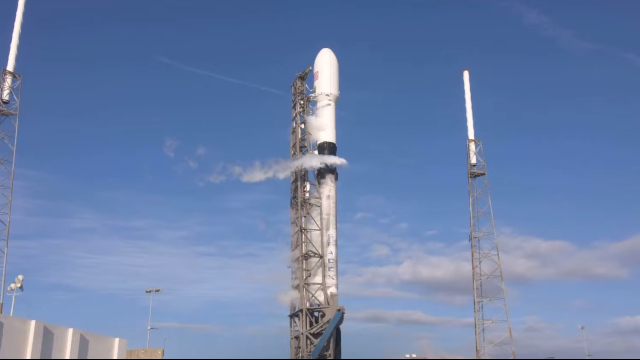Another 60 Starlink satellites were launched into low Earth orbit today aboard a SpaceX Falcon 9 Full Thrust Block 5 rocket. This brings the total number of Starlink satellites in orbit up to 240, of which 235 are active, 2 are preparing to de-orbit, and 3 have stopped responding to commands. That means so far, Starlink launches have a 97.8% success rate, and this successful launch brings us one step closer to affordable, wide-coverage, high-speed, low-latency internet.
Today also marks the first attempt by SpaceX to recover the Falcon 9 fairing (nose cone), which protects the satellite cluster during launch. Typically, these fairings separate once the rocket is in orbit to allow satellites to deploy. However, they usually splash down into the ocean and are lost. By catching the fairings in a large net, SpaceX hopes to refurbish and reuse them, which could save as much as $6 million per launch. After today’s launch, SpaceX was able to recover one of two fairings successfully, with one just missing the recovery ship.
ALSO: Kindred Fates is another Pokemon clone that’s blowing up on Kickstarter
SpaceX may perform up to 22 more Starlink launches in 2020 alone, which should bring the number of satellites up to over 1,500. That number should give SpaceX the coverage it needs to start offering service, and service may be available as early as later this year. With latency estimated at 25-35ms and speeds topping out at 10 Gbps, Starlink may kick off the second revolution of online gaming.
A big issue with online gaming now is that current wireless internet latency, whether it be cellular or satellite-based, is too high to play most popular titles reliably. Games like Overwatch, Fortnite, and CS:GO become practices in frustration when playing with a high ping. With Starlink, you could feasibly play these games anywhere that you can bring a receiver. While that means the service is only semi-portable, these terminals could be mounted in cars, planes, ships, and remote areas where traditional internet solutions can’t reach. This is especially important for those who live in rural areas as many sparsely populated locations in the US don’t have reliable, fast, internet service.
You can watch the (awesome) livestream of the whole Starlink L3 mission below:







